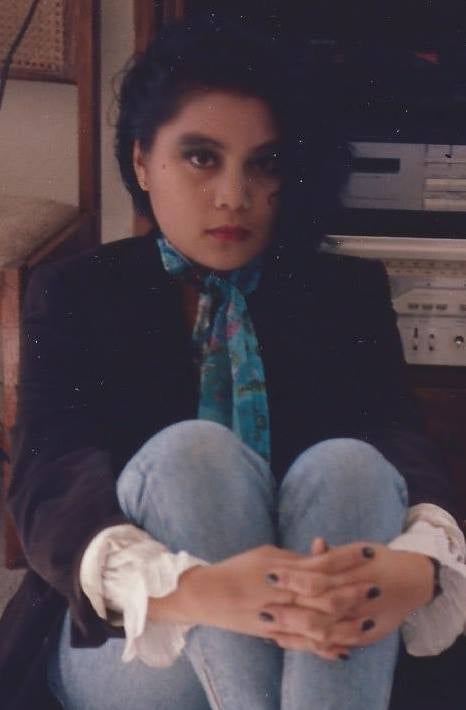Growing up as a Filipina in a small city in Washington State, I confronted most of the identical insecurities about my physique picture as my friends. Like lots of them, I needed to be like a mannequin — skinny and tall, with flawless pores and skin.
But my greatest insecurities have been much less about weight or peak, and extra about shade. I wished I had blue eyes and blond hair, not the brown eyes and hair folks stated have been “unique.” I wished my pores and skin may very well be just a few shades lighter, so I would not stand out a lot from my white buddies.
It wasn’t till junior excessive, in an even bigger metropolis in Northern California, that I was surrounded by all kinds of Asian children, together with Japanese, Korean, Vietnamese, and Filipino classmates — lots of whom have been strikingly happy with their cultures. I wasn’t the one Asian child at school anymore, and I started to really feel much less “completely different.”
But the want for lighter pores and skin and a extra Caucasian look continued to hang-out me. I deepened my immersion into bands just like the Cure, Depeche Mode, and Echo and the Bunnymen, the place the look was morose and, typically, unbelievably pale, like vampires dwelling in a cave. For Halloween one 12 months, I dressed up as a fairly convincing Robert Smith, together with utilizing child powder to make my pores and skin as ghostly as doable and smudging on the thickest of eyeliner.

Photo courtesy of Aimee Suzara
In highschool, my household moved to the Mojave Desert of California. Once once more, I had few friends of shade, and my brown pores and skin and Filipina options deemed me an outsider. I retreated additional into my outsized, thrift-store garments and a curtain of angled hair that hung over one cheek. But irrespective of how a lot I tried to cover myself, my identification was proper there, obviously so, in my physique.
I keep in mind one second that is nearly hilarious on reflection, when I dragged my household to the Renaissance Faire, an out of doors competition meant to recreate the Elizabethan interval of England. It wasn’t till I wandered into a piece designed to appear like a market promoting treasures of the “Orient” — drums, incense, tapestries — that I realized how unlikely it will have been: a Filipino household in Renaissance Europe.
Why did I wish to be in several pores and skin, in a unique physique, so badly?
As a baby of the Nineteen Eighties, I was solely uncovered to white princesses, white Barbies, and white celebrities. I by no means noticed anybody even remotely like me on TV or in movies. The historical past books my colleges used did not comprise any details about Asian nations or Asian Americans.
The Philippines felt like a faraway, irrelevant place, regardless of the generations-deep affect of Filipinos within the United States.
Until I was an grownup, I by no means realized in regards to the significance of Filipinos within the United States: how Filipino and Mexican staff joined collectively to type the United Farm Workers Union; how the healthcare business was so closely fueled by Filipinos similar to my mom and father. I did not know that Filipino presence within the United States dated again to so far as 1587 when Filipinos arrived at Morro Bay on Spanish ships, 33 years earlier than the Pilgrims arrived at Plymouth Rock.
I additionally by no means realized in regards to the United States placing Filipinos on human show within the 1904 World’s Fair. I did not find out about Spain’s colonization of the Philippines, which started in 1521 and stretched for almost 400 years, till Spain ceded the land to the U.S. for one more 48. I did not find out about how these colonizations performed a task within the colorism within the Philippines, which resulted in lightness being related to larger standing.
Growing up into this lack of illustration of myself, I was sure to wish to disappear. I felt both invisible or wrongly seen.
But one thing modified, beginning when I was 17. That was when I made my first go to to the Philippines and was surrounded by different brown folks like me. I felt an amazing sensation of sameness and belonging, one thing I’d by no means skilled earlier than. This sense of being misplaced in a crowd catalyzed a curiosity and want about my tradition and identification. It sparked a perspective change that led me to begin to feel proud of my heritage — and to really feel happy with my pores and skin shade and bodily options, too.
People inevitably use pores and skin shade to “different” each other. That now not retains me from embracing my pores and skin and my physique, however for a very long time, it did. Growing up, I could not but see how my golden-brown pores and skin may very well be stunning, since I so hardly ever noticed examples of it round me. So now, the most important lesson I try to speak is the significance of assorted illustration.
We all have to push for and help writing, movies, actors, TV exhibits, performs, and music by Asian and Pacific Islander folks. And inside these depictions, we have to help various and sophisticated illustration. We have to find out about what it means to be Filipino, Cambodian, Korean, Japanese, Vietnamese, Indonesian, Indian, Hmong, Chinese, Nepali, Samoan, Hawaiian, Micronesian, Chamorro, mixed-race, and extra.
Representation is not an ideal resolution to the issues of deeply ingrained racism and colorism. But it presents a mirror that younger folks can see themselves mirrored in. If we as a society extra precisely present reflections of our youngsters that honor and spotlight their magnificence, uniqueness and energy, they’re going to have the ability to love the pores and skin they’re in. And each particular person deserves that probability.









:upscale()/2024/06/17/887/n/1922729/tmp_9hVbc2_912a6249227fda48_Normatec_GR.jpg?resize=420%2C300&ssl=1)
:quality(70):extract_cover():upscale():fill(ffffff)/2024/06/27/207/n/44344577/shopEUjq4K.jpg?resize=350%2C300&ssl=1)
:quality(70):extract_cover():upscale():fill(ffffff)/2024/06/28/656/n/1922729/29c8e676667ecca3a82567.49533556_Nike_Sabrina.jpeg?resize=420%2C300&ssl=1)
:quality(70):extract_cover():upscale():fill(ffffff)/2024/06/25/802/n/44344577/b46df709667b09280a9582.89518204_pbfit.jpg?resize=350%2C300&ssl=1)